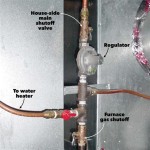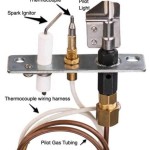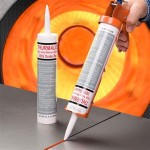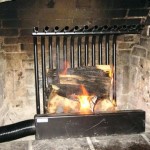```html
Direct Vent Propane Fireplace Efficiency: A Comprehensive Overview
Direct vent propane fireplaces offer a convenient and aesthetically pleasing alternative to traditional wood-burning fireplaces. Their closed combustion system, ease of use, and relatively clean burning characteristics make them a popular choice for homeowners. However, understanding the efficiency of these appliances is crucial for making informed purchasing decisions and optimizing their performance.
Efficiency, in the context of a direct vent propane fireplace, refers to the percentage of fuel energy that is converted into usable heat for the home. A higher efficiency rating signifies that more of the propane's energy is being directed towards warming the living space, leading to lower operational costs and reduced environmental impact. Several factors influence the efficiency of these fireplaces, ranging from design characteristics to proper installation and maintenance.
Understanding Efficiency Ratings and Standards
The efficiency of direct vent propane fireplaces is typically expressed using two primary metrics: Annual Fuel Utilization Efficiency (AFUE) and Steady State Efficiency. AFUE provides a broader measure of efficiency, taking into account seasonal variations and cycling losses (the energy lost during startup and shutdown). Steady State Efficiency, on the other hand, reflects the efficiency achieved under continuous operation at a specific heat output level. It's important to note that Steady State Efficiency figures are generally higher than AFUE ratings because they don't account for the energy losses associated with intermittent operation. Manufacturers are legally required to display AFUE ratings for new appliances.
AFUE is calculated based on standardized testing procedures mandated by the Department of Energy (DOE). These tests simulate realistic operating conditions, including periods of both full and partial load operation. The resulting AFUE rating provides consumers with a reliable benchmark for comparing the energy performance of different models. Look for the Energy Star logo, which indicates that the fireplace meets certain energy efficiency criteria established by the Environmental Protection Agency (EPA). Energy Star certified models typically have higher AFUE ratings than standard models, offering greater energy savings over their lifespan.
While AFUE is a valuable metric, it's not the only factor to consider when evaluating fireplace efficiency. Other elements, such as the fireplace's heat output capacity and the insulation levels of the surrounding walls, also play a significant role in determining its overall effectiveness as a heating appliance.
Key Factors Influencing Fireplace Efficiency
Several design and installation aspects directly impact the efficiency of a direct vent propane fireplace. Analyzing these elements helps determine the potential heating performance and associated energy costs.
Combustion Chamber Design: The design of the combustion chamber is paramount to efficient burning. Fireplace designs that promote complete combustion of the propane fuel will invariably be more efficient. This generally involves optimized air-to-fuel ratios and effective mixing of the fuel and air. Some models incorporate features such as ceramic fiber logs or refractory panels to radiate heat more effectively and improve combustion efficiency.
Venting System: The direct vent system is crucial for removing combustion byproducts safely and efficiently. A properly installed and sealed venting system prevents heat loss and ensures that the fireplace operates within its designed parameters. Leaks in the venting system can reduce efficiency and potentially compromise indoor air quality. The length and configuration of the venting system can also affect efficiency. Consult the manufacturer's instructions and local building codes to ensure proper venting installation. Improper venting can lead to carbon monoxide problems, which is a deadly, odorless gas created by incomplete combustion.
Ignition System: The type of ignition system used in the fireplace also influences efficiency. Electronic ignition systems are generally more efficient than pilot light systems because they only consume energy when the fireplace is actively burning. Standing pilot lights, which burn continuously, can waste a significant amount of propane over time.
Thermostat Control: A programmable thermostat allows homeowners to precisely control the fireplace's operating schedule, maximizing energy savings. Setting the thermostat to lower temperatures when the room is unoccupied can significantly reduce propane consumption.
Glass Front: The glass front on a direct vent fireplace serves as a barrier to retain radiant heat. Look for models with high-quality, tempered glass that is designed to withstand high temperatures and minimize heat loss. Some models feature ceramic glass, which offers even greater heat resistance and clarity.
Sealing and Insulation: Proper sealing and insulation around the fireplace are essential for preventing air leaks and maximizing heat retention. Ensure that the area around the fireplace is well-insulated to prevent heat from escaping into unheated spaces.
Optimizing Efficiency Through Maintenance and Usage
Even the most efficient direct vent propane fireplace will perform poorly if it is not properly maintained and used. Regular maintenance and mindful usage habits are crucial for maximizing energy savings and ensuring the longevity of the appliance.
Regular Cleaning: Periodically clean the fireplace to remove dust, soot, and other debris. This will help maintain optimal combustion and heat transfer. Refer to the manufacturer's instructions for specific cleaning recommendations. Pay particular attention to cleaning the glass front, burner assembly, and venting components.
Professional Inspection: Schedule an annual inspection by a qualified technician to ensure that the fireplace is operating safely and efficiently. The technician can identify and address any potential issues, such as gas leaks, venting problems, or burner malfunctions. A professional inspection will also ensure that the carbon monoxide detector is functioning correctly.
Proper Ventilation: Ensure adequate ventilation in the room where the fireplace is located. Proper ventilation helps to prevent the buildup of combustion byproducts and maintains a healthy indoor air quality.
Smart Thermostat Settings: Utilize the programmable thermostat to optimize energy usage. Set the thermostat to lower temperatures when the room is unoccupied or during periods when supplemental heating is not required. Avoid setting the thermostat too high, as this can lead to excessive propane consumption.
Strategic Room Heating: Consider using the fireplace to heat specific rooms or zones rather than attempting to heat the entire house. This can be a more energy-efficient approach, particularly if the central heating system is less efficient.
Consider Supplemental Heating Options: In some cases, it may be more efficient to use supplemental heating options, such as electric space heaters, for short periods of time or in smaller rooms. Assess your heating needs and choose the most energy-efficient option for each situation.
Choosing a direct vent propane fireplace involves considering numerous factors, and efficiency is a key aspect. Understanding efficiency ratings, examining design features, and implementing proper maintenance practices can significantly impact energy consumption and overall heating performance. By taking these steps, homeowners can make informed decisions that maximize the benefits of their propane fireplace while minimizing their environmental impact.
```
What Is A Direct Vent Gas Fireplace And How Efficient Are They

Freestanding High Efficiency Direct Vent Gas Fireplaces Inserts Stoves Godby Hearth And Home

Pros And Cons Of Direct Vent Gas Fireplaces Tarantin Industries

Direct Vent Propane Fireplaces As Efficient Space Heating Roach Energy

What Are Direct Vent Gas Fireplaces Admiral Propane

Direct Vent Fireplaces How They Work And Why You Need One

What Is A Direct Vent Fireplace Fireplaces Learning Center

Oxford Direct Vent Gas Stove The Place

Direct Vent Gas Stoves In Dc

Kingsman Hbzdv3624 Zero Clearance Direct Vent Gas Fireplace 36 Woodland
Related Posts








